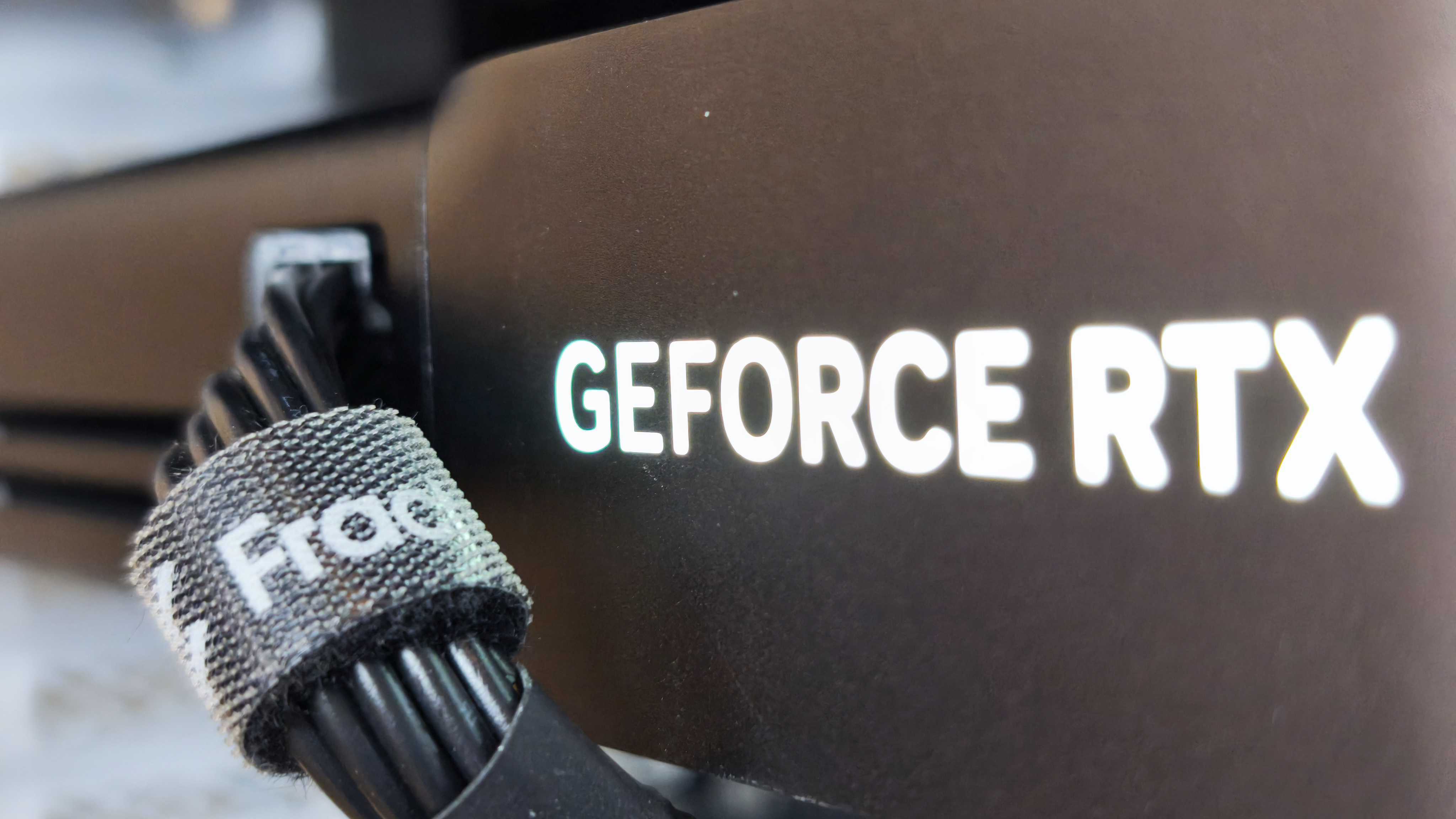Our Verdict
The NVIDIA GeForce RTX 5090 FE is quite simply the new peak for graphics cards. While some may look at the pure gigabyte VRAM figures and presume the leap from the previous 40-series isn't that big, they are wrong. With a host of new software features accompanying a vast upgrade in efficiency, such as neural rendering, mega geometry and DLSS 4, this new Blackwell-powered flagship card not only brings more power than before; it does so more slickly than ever. 3D artists, game developers and video editors with truly professional needs should put the 5090 at the top of a very short list - if the needs justify the near-$2,000 cost, of course.
For
- Absolute monster performance
- Not too loud
- Host of revolutionary features
Against
- More power than most non-pros need
Why you can trust Creative Bloq
It's finally here. After much anticipation, the NVIDIA GeForce RTX 5090 FE, the first NVIDIA GeForce card of the full-on AI era, is here. Promising a paradigm shift in graphics processing, the 5090 FE (the FE stands for Founders Edition) is the flagship of an upcoming line of 50-series graphics cards from NVIDIA, with more power, more efficiency and more AI-ready features to take creative pros' work further than ever - at least that's the pitch.
But will it vault right to the top of the list of best graphics cards on the market, or have we been waiting in vain? I have had one for a couple of weeks to find out.
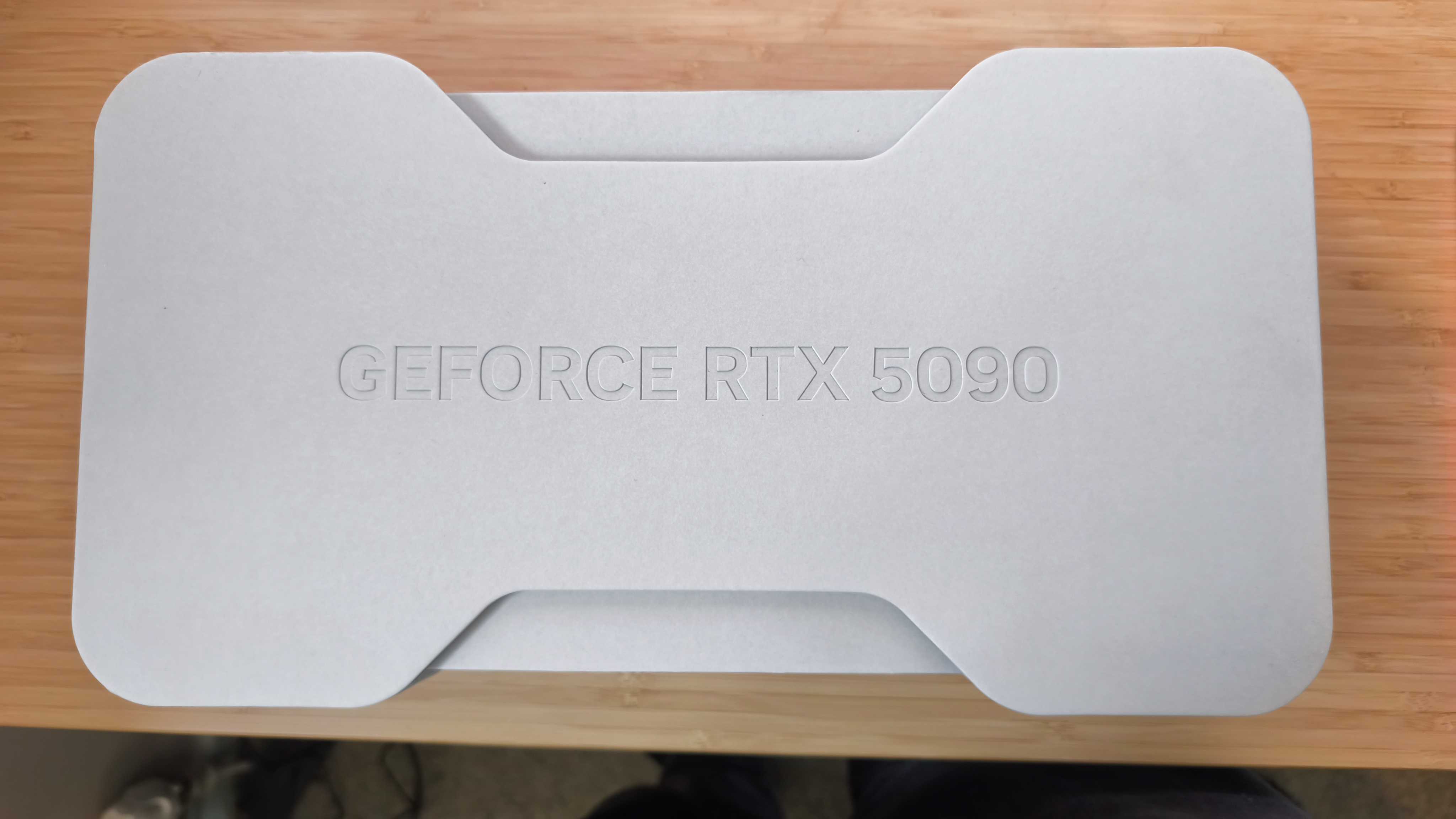
NVIDIA GeForce RTX 5090 FE review: Key specifications
| Row 0 - Cell 0 | 4070 Ti Super/16GB | 4080/16GB | 4090/24GB | 5090 FE/32GB |
| Release date: | January 2024 | November 2022 | October 2022 | January 2025 |
| Approx price: | $859 | $1,299 | $1,499 | $1,939 |
| CUDA cores: | 8448 | 9728 | 16384 | 21760 |
| Tensor (AI): | 706 | 780 | 1321 | 3352 |
| Base clock (MHz): | 2340 | 2210 | 2230 | 2010 |
| Bus width: | 256 | 256 | 384 | 512 |
| Effective mem speed: | 21 GB/s | 22.4 GB/s | 21 GB/s | 28GB/s |
| Wattage draw: | 285W | 320W | 450W | 575W |
Design and build
The NVIDIA GeForce RTX 5090 FE is a graphics card. That means it's essentially a big blocky block of Tech Stuff. It's incredibly solid and feels dense and sturdy, as it should. But there are notable differences to the previous generation of cards. Slightly longer than the 4070 Ti Super that previously occupied its new slot in my tower PC, it's also slightly thinner, including the port panel, meaning there's a small gap in the back of the tower where there used to be none. I will be able to cover that by reattaching one of the back panel bars again, though, I think.
The power socket is very cleverly inserted at an angle to minimise the protrusion of the power cable for users with more compact towers than my admittedly generous-sized one.
Switch it on, and the GEFORCE RTX logo on the side lights up, which is of course a vital detail for the aesthetically minded among us. I really like it, as it's a touch of flash without being too garish.
The back of this sleek Founder's Edition has four ports, three DisplayPort and one HDMI. You'll be entirely unsurprised to find the DPs support up to 4K 480Hz or 8K 165Hz with DSC each, while the HDMI supports up to 4K 480Hz or 8K 120Hz with DSC, Gaming VRR, and HDR.
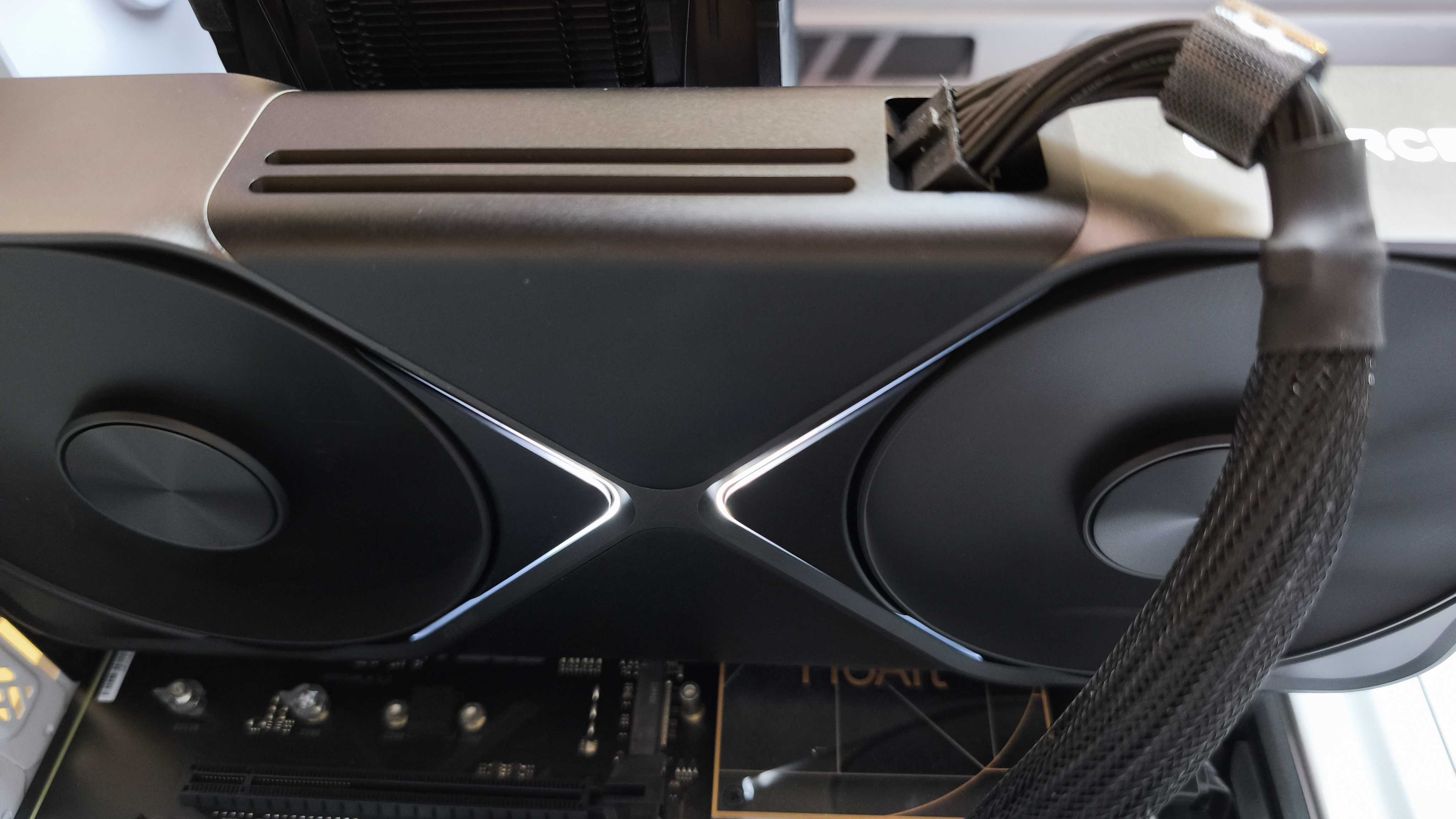
Features
The big new feature in the 50-series cards is the all-new Blackwell architecture, which succeeds the Ada Lovelace of the 40-series, and comes with more AI features than before.
Daily design news, reviews, how-tos and more, as picked by the editors.
Pure core counts are up dramatically across the board as you see in the specs sheet above, but the GB number increase may be less than anticipated, as this flagship card comes with 32 of the latter. Why not more? As we found out during NVIDIA's Editors Day at CES 2025, it may be because instead of just going for more power at any cost, the increased AI-fication has led to vastly increased efficiency in how the card distributes and uses its power. So with a card that draws a maximum wattage of about 25% more than the previous flagship, NVIDIA claims up to 70% higher performance for creatives (and in one specific case of 4-2-2 camera video rendering, a staggering 11 times more efficient processing). All this for the same price as the 4090 set you back last year. We're getting closer to the Performance bit...
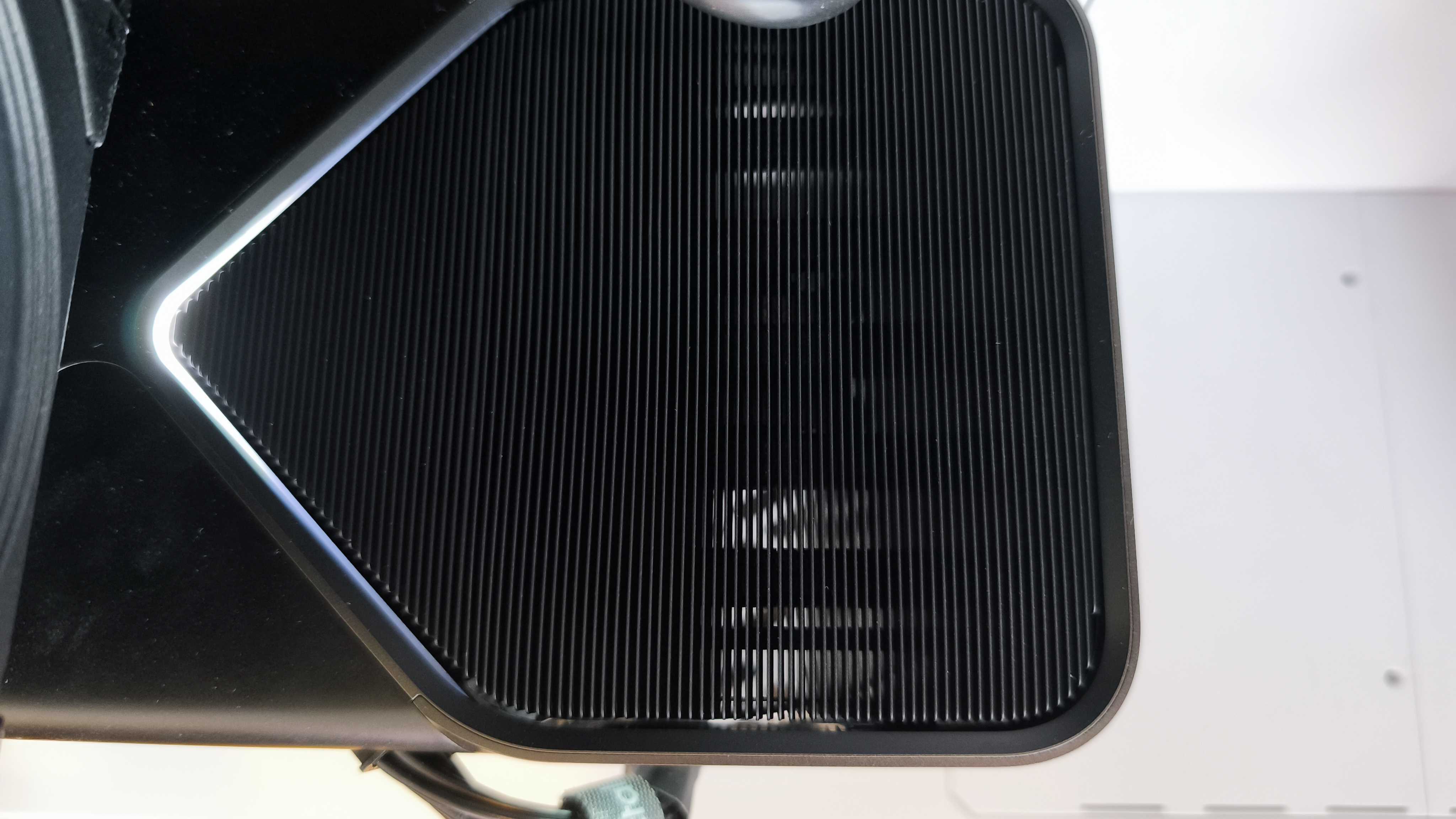
Tensors
NVIDIA's proprietary tech, CUDA cores, are central to the card's graphics prowess. In fact, for many in the 3D arena, the number of CUDA core processors on a card was the primary criterion for choosing a GPU.
In addition to that, we have the ever-increasingly important Tensor Cores. Both are processing units, and the more you have, the better something will run. Where CUDAs run general graphics and 3D rendering well, they are not nearly as efficient at running the Neural processing, AI and “Deep” processing tasks as Tensor cores,
The 5090 FE boasts 3352 of the latter, more than double that of the 4090 (1321), while you'll find 30% more CUDA cores here (21,760) than in the 4090 (16,384). And it's those Tensor cores that are at the heart of the big innovations here, including DLSS 4, Neural rendering, Neural shaders, and much more.
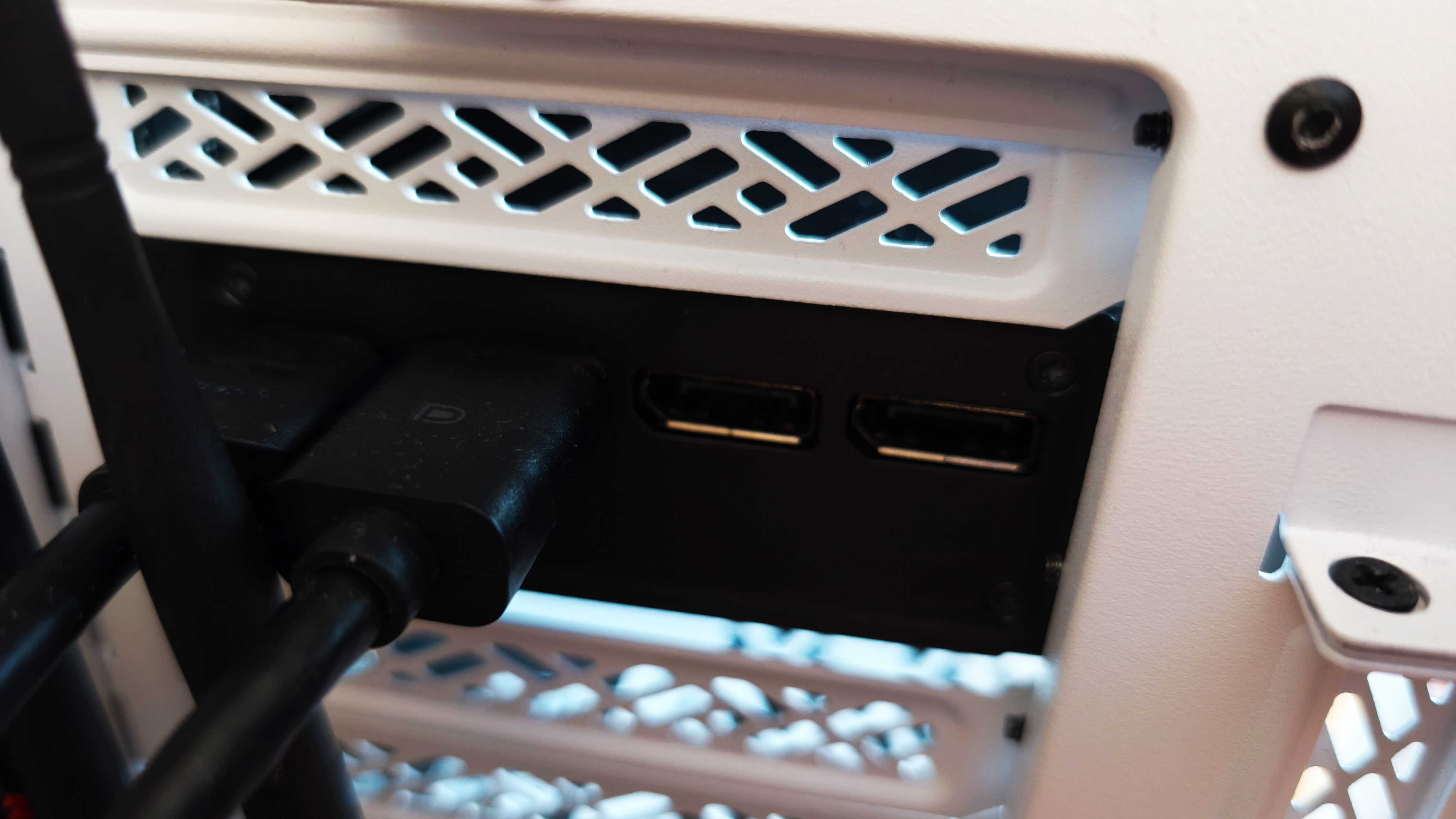
Benchmark scoring
| GEEKBENCH 6 | GPU OpenCL: | 376,919 |
| UL PROCYON | Flux AI Image Generation: | 4.145s/image |
| TOPAZ VIDEO AI | Enhancement: | 142.79 |
| Row 3 - Cell 0 | Slowmo: | 362.44: |
| Row 4 - Cell 0 | Combined: | 2274.93 |
| PUGETBENCH for PHOTOSHOP | Overall: | 10,974 |
| Row 6 - Cell 0 | General: | 101 |
| Row 7 - Cell 0 | Filter: | 120 |
| PUGETBENCH for DAVINCI RESOLVE | General: | 13,695 |
| Row 9 - Cell 0 | GPU Effects: | 203 |
| Row 10 - Cell 0 | Fusion score: | 114 |
| Row 11 - Cell 0 | AI score: | 135 |
| Row 12 - Cell 0 | H.264 encoding: | 129.04fps |
Performance
If you're buying the 5090 FE card, you expect absolute top-level performance across the board, and I'm happy to report that it duly delivers exactly that. Name the GPU-intensive task, and this thing is producing numbers I've literally never seen before.
The biggest gains are found in applications such as DaVinci Resolve and the Flux image generator. The DaVinci Resolve overall score is at least 30% above anything I've seen in any 40-series card, with it setting a new, well, benchmarking benchmark across the board.
I also used 4-2-2 camera video assets to run a concurrent render of 9 video streams, which it did faster in real-time than my 4070 Ti Super did with a single render. I estimated about a 9.8x increase in speed, thanks to the new Blackwell architecture, which can clearly run render tasks like this much faster than the Ada Lovelace-equipped 40-series. Video editors, the world lies at your feet now.
The overall Photoshop score is perhaps a little less dramatically higher than previous gens, but it's in Flux where we see staggering differences. A much more memory-intensive software than Stable Diffusion, which we usually use for our AI image-gen benchmarks, the 5090 rattled through the test by generating images faster in Flux than I've seen anything do in the Stable Diffusion 1.5 test (a much lighter one).
Finally, traditional Geekbench 6 OpenCL testing gave me a mind-melting 376,919 points, 70% more than my 4070 Ti Super, 40% faster than most 4090 tests, and indeed higher than pretty much anything run through Geekbench ever. And this card is apparently not even optimised for that software yet.
3D processing is also much, much faster than before, thanks to the cohort of innovations on board here. Software support is obviously still being rolled out, but by the end of the year, almost every notable piece of 3D or video software should have full support for the Blackwell suite of features. As such, some of our usual benchmark tests aren't yet compatible with the 50-series cards, but we will add them to this review as and when we can run them.
And although we're not a gaming site, I am a gamer (and so will many of you be), and using this card in a game like Cyberpunk 2077, with the graphics turned up to ultra in 4K resolution and DLSS 4 switched on, I consistently averaged over 200 frames per second without the card seemingly breaking a sweat. What a time to be alive.
Also, extra kudos to NVIDIA for releasing it with a remarkably stable and bug-free driver on the first go. Other companies, take note.
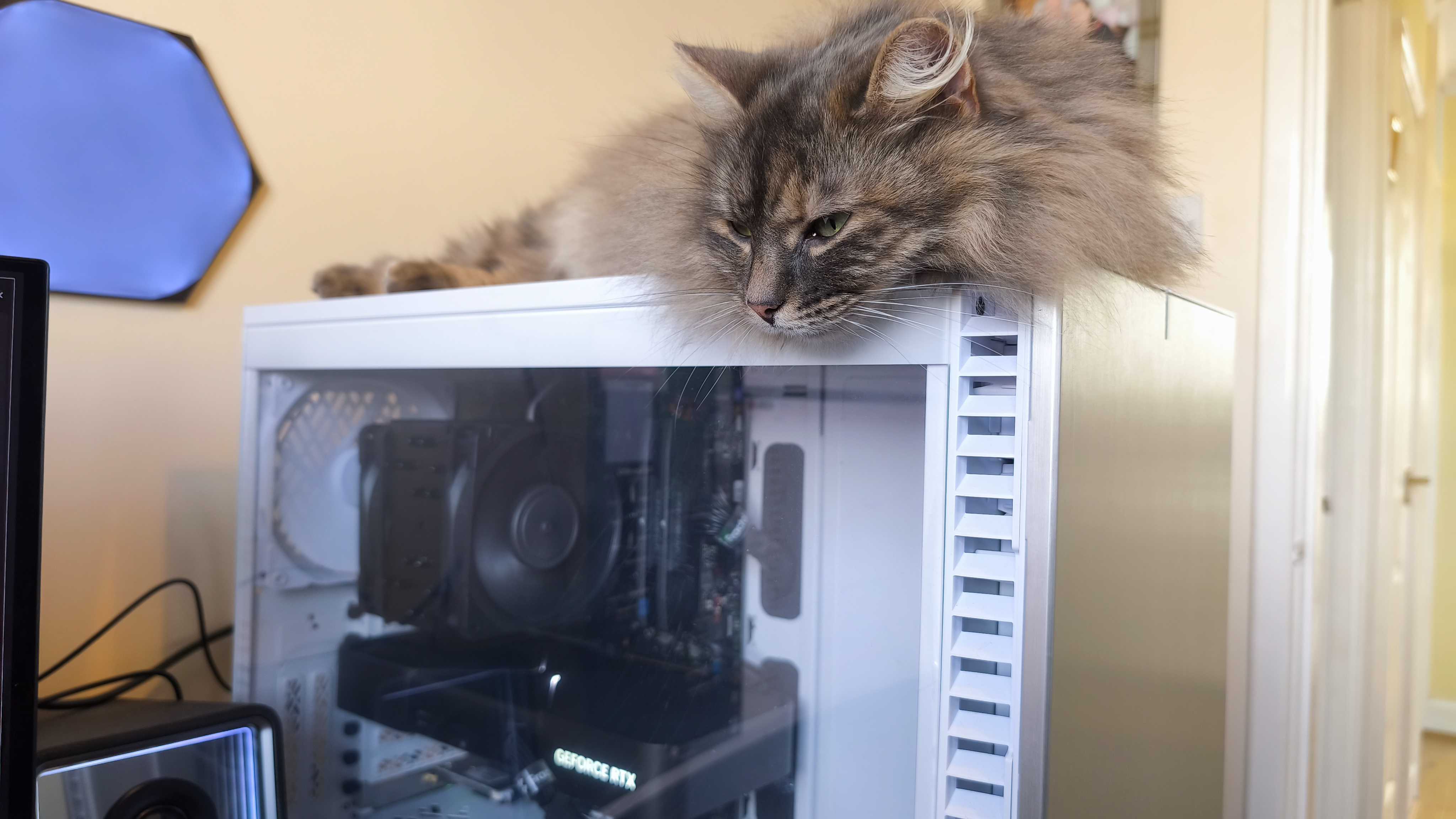
Who is it for?
At almost $2,000, the NVIDIA GeForce RTX 5090 FE is as far removed from a casual card as you can get. This is a card for Serious Users with Serious Requirements for their Serious Work (and play), and the price reflects that.
With DLSS 4 support, neural rendering, RTX Mega Geometry and a host of other innovations on board, this is the new top choice for 3D modellers, game developers and graphic designers, and the vastly increased video-editing and rendering efficiency (especially if you're using the content-creator-friendly 4-2-2 cameras that are getting more popular every week) will make this the go-to card for video editors too.
Photo editors will also see a big uptick, but they might want to stick around for the incoming 5080 or 5070 cards, as they probably won't need the absolute top-level card in this lineup.
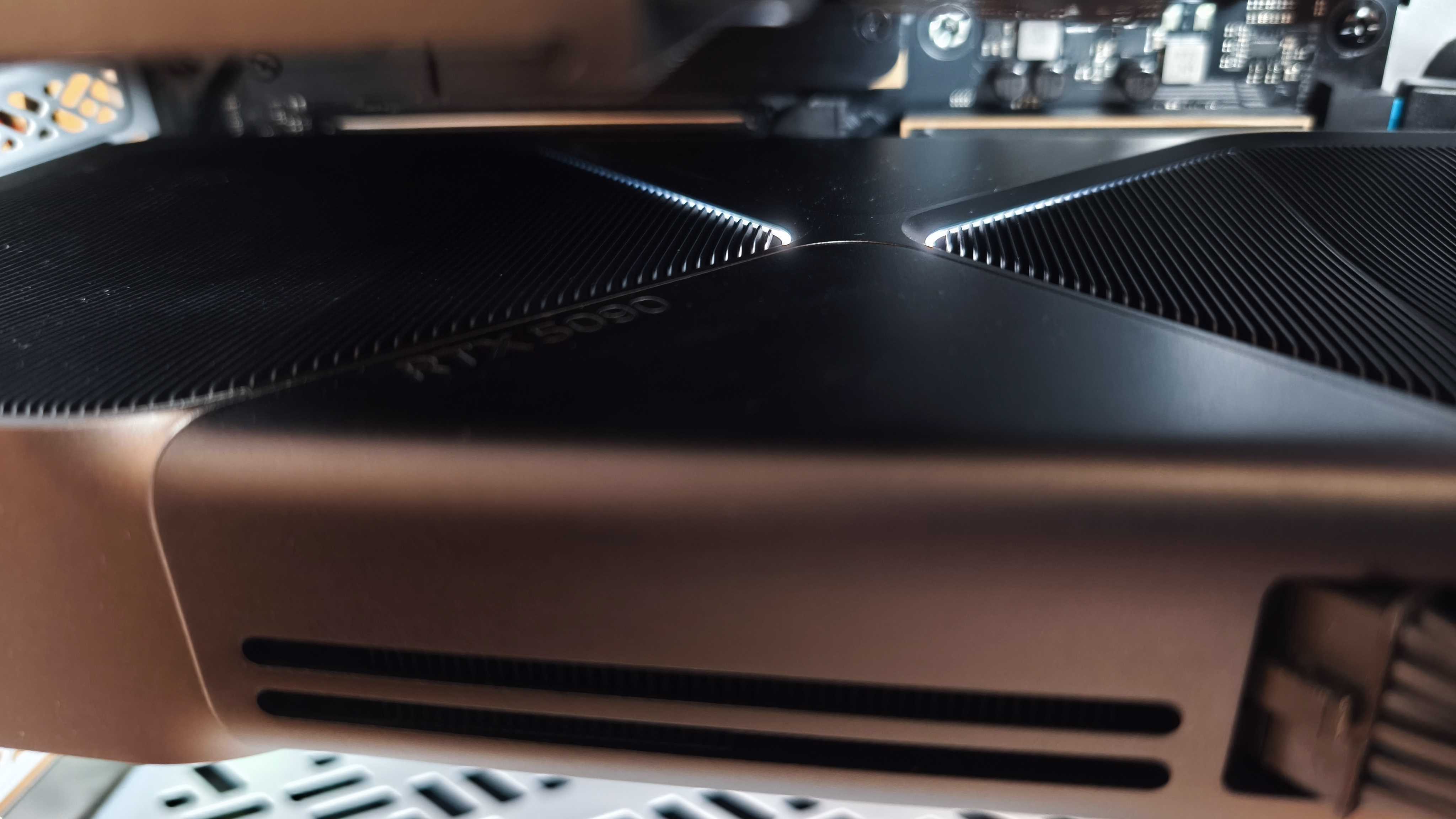
Buy it if
- you are a professional game developer or 3D modeller
- you need the absolute best in AI-accelerated graphics performance
- you want cinema-level graphics in your gaming sessions too
Don't buy it if
- your needs don't justify forking out $2k for a graphics card
out of 10
The NVIDIA GeForce RTX 5090 FE is quite simply the new peak for graphics cards. While some may look at the pure gigabyte VRAM figures and presume the leap from the previous 40-series isn't that big, they are wrong. With a host of new software features accompanying a vast upgrade in efficiency, such as neural rendering, mega geometry and DLSS 4, this new Blackwell-powered flagship card not only brings more power than before; it does so more slickly than ever. 3D artists, game developers and video editors with truly professional needs should put the 5090 at the top of a very short list - if the needs justify the near-$2,000 cost, of course.

Erlingur is the Tech Reviews Editor on Creative Bloq. Having worked on magazines devoted to Photoshop, films, history, and science for over 15 years, as well as working on Digital Camera World and Top Ten Reviews in more recent times, Erlingur has developed a passion for finding tech that helps people do their job, whatever it may be. He loves putting things to the test and seeing if they're all hyped up to be, to make sure people are getting what they're promised. Still can't get his wifi-only printer to connect to his computer.
You must confirm your public display name before commenting
Please logout and then login again, you will then be prompted to enter your display name.
